
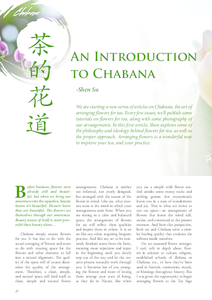 |
|
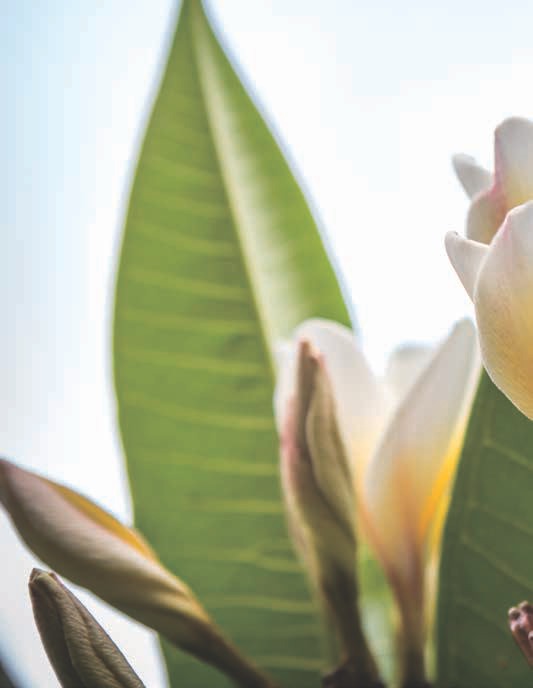
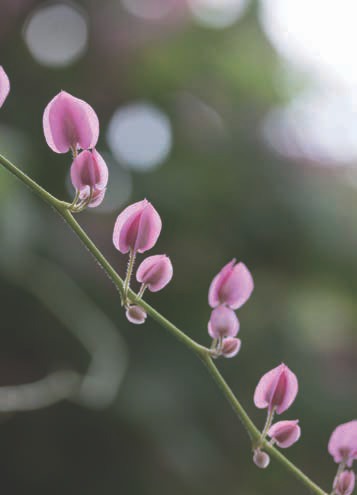
Before humans, flowers were already still and beautiful, but when we bring our awareness into the equation, beauty knows it's beautiful. Flowers know they are beautiful. The flowers see themselves through our awareness. Beauty aware of itself is more powerful than beauty alone...
Chabana simply means flowers for tea. It has less to do with the actual arranging of flowers and more to do with creating space for the flowers and other elements to fall into a natural alignment. The quality of the space will of course determine the quality of the arrangement. Therefore, a clean, simple, and natural space will lend itself to clean, simple and natural flower arrangements. Chabana is neither too informal, nor overly designed, but arranged with the nature of the flower in mind. Like tea, what matters most is the mind in which your arrangements stem from. When you are resting in a calm and balanced space, the arrangement of flowers for tea will reflect these qualities and inspire them in others. It is an art like any other, requiring frequent practice. And like any art to be mastered, freedom stems from the form, meaning more repetition and input in the beginning until you slowly step out of the way and let the creative process naturally work through you. It becomes less of you arranging the flowers and more of letting them arrange your state of being, as they do in Nature, like when you see a simple wild flower nestled amidst some mossy rocks and arching grasses that mysteriously leaves you in a state of wonderment and joy. That is what we invite to our tea space - an arrangement of flowers that leaves the mind still, awake, and connected to the present moment. And from that perspective, both tea and Chabana serve a similar healing quality that awakens the stillness inside ourselves.
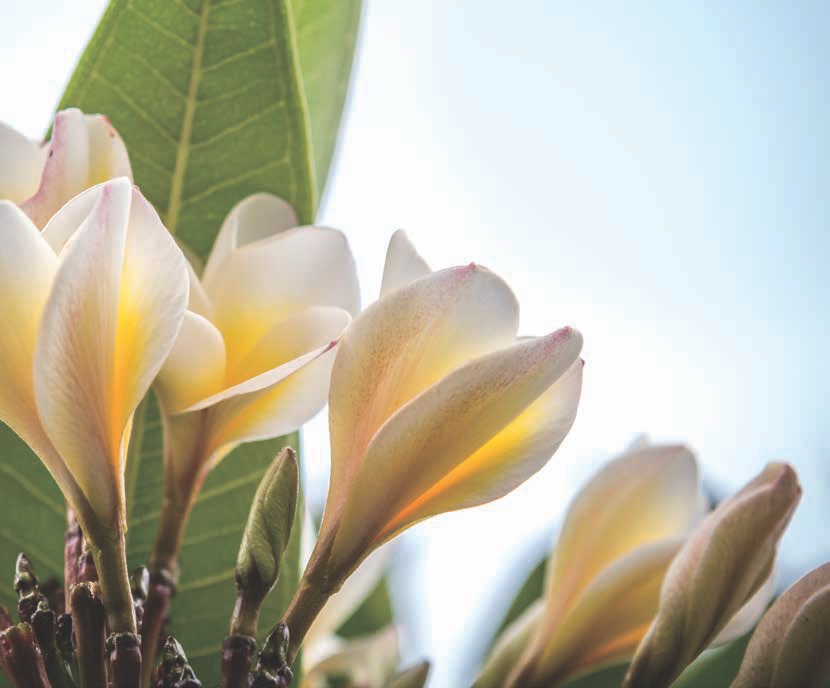
I'm no seasoned flower arranger. I can't talk in depth about flowers in relation to culture, religion, established schools of Ikebana or Chabana, etc., or how they've been used in festivals, ceremonies, rituals, or blessings throughout history. But I was given the opportunity to begin arranging flowers at the Tea Sage Hut, and so I have the unique experience of arranging flowers for tea at an actual tea center.
At first, I was intimidated to write on Chabana. There are very little resources on the art, and there are certainly not any methodical, step-by-step procedures to crafting flowers for tea. In fact, the whole concept of adhering to set rules is quite antithetical to Chabana itself. However, there is a loose structure to work within. And while Chabana may have been reserved for a particular tea ceremony at one point in time, I like to practice flowers for tea at any tea session or ceremony. For the sake of this article, I use the word Chabana in its most flexible form, as flowers arranged naturally from the heart for any tea occasion.
I write this article because I too am a beginner and also due to the fact that I simply started arranging flowers for tea without any training in an established school of floral art, and that's probably where many of you find yourselves. This can be an intimidating barrier to face if you want to start. How can one go about doing this without some sort of guidelines? In this introduction, while I can't offer specific instructions on how to arrange the flowers themselves, I can give practical guidelines for setting up and getting started. It's not so much about formal training as it is about cultivating the skill to quiet the mind and work from there, which is also why it's a suitable way to express one's Zen.
"Whatever you think you can do or believe you can do, begin it. For in action there is magic, grace and power."
Just as we invite people to start brewing bowl tea when they come to the center, which is simpler and more accessible than gongfu tea, I invite you to start with Chabana, as opposed to more formal and complex styles of arranging flowers (Ikebana). Like bowl tea, there are less parameters to consider, and the focus is aimed at connection with spirit. In this case, connection between yourself and the spirit of the arrangement.
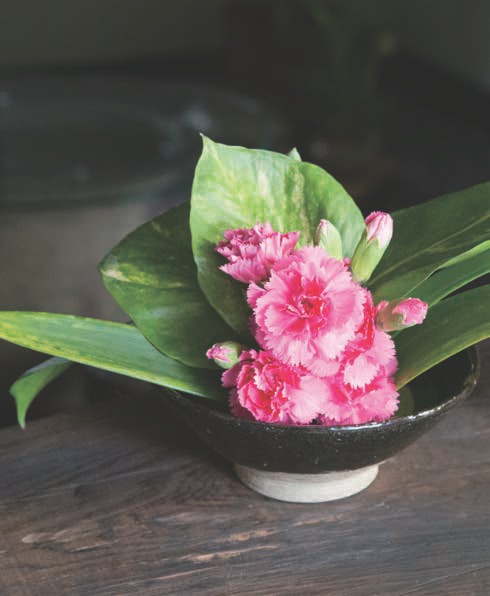
First, you will need a source of flowers and other floral elements. There is usually plenty of material to work with by simply stepping out the front door with a good pair of pruners. Look to your teacher for all that you need.
"Open your eyes and take the time to look. The trees will be happy to unveil their secrets to you."
There really is no greater teacher than Mother Nature when it comes to Chabana. It's very useful to have a demanding Zen teacher around to scold your every arrangement, but look no further than the forest path, the nearby river, or the weed in the shadows. She is your inspiration manifest. But, you'll probably need to find a local flower shop, too! Choose things in season and only take what you need. Don't get lured by large and lavish flowers. The beauty of Chabana is found in that mysterious simplicity, even frugality (as Master Lu said in the Cha Jing). Just watch what happens when you create a sacred space for the unadorned... It's not meant to excite the senses, but to stop them in their tracks. Again, I stress the importance of working from a calm space, from which calm arrangements arise, and from which calm inspiration ensues. A cluttered space and a frantic mind will reveal itself in a contrived and haphazard arrangement.
Fillers can be anything that fills the space within and around your arrangement. I often use bushy, green fillers, but there are plenty of varieties and colors to choose from. Also, be careful not to fill space simply because it's there. Open space is just as important as filled space. Keep the stems of your flowers and fillers immersed in water as much as possible, from the time they were cut or purchased, to the time they are placed in the arranging vessel. This will ensure a longer life and greater respect towards your work.
"Zen is creating sacred space around mundane activities."
Just as you will need a special space to display your Chabana you will also need a space to arrange it. That could be anywhere on any level surface. It too should be clean and organized and at a comfortable height when sitting to help facilitate the process. A clean space is inviting and open to creativity. Here at the center, I do most of my work near our kitchen on a low, round table in front of an altar. We have chosen the sill of an open window peering into our gongfu tea room as the display for our Chabana and more formal flower arrangements.
As any cook loves a sharp knife, a good pare of pruners and scissors makes the process much more enjoyable. In fact, that's a great lesson for starting any endeavor: motivate yourself in the beginning. I'm much more motivated to create Chabana when I have quality tools. Make it something you look forward to! In the beginning, your tools should be simple and basic, but not cheap. Spike pads are useful but not always necessary. And though we are fortunate enough to have a wide selection of vases at the center, my teacher had me start with only two. They were wide and open and easy to work with.
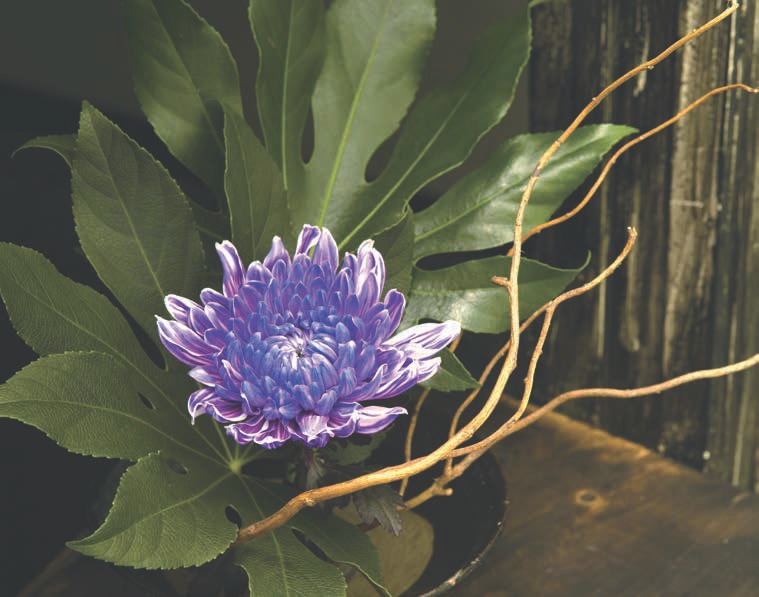
Once you've gathered your flowers and other elements and set up your work space, take a few minutes to just sit and breathe. This is possibly the most important step. Begin mindfully and finish in the same manner, before the analytical mind kicks in. Place your Chabana carefully on its display and take a step back. At this crucial point, I intuitively know the state of my mind while I was arranging the flowers. Be both satisfied and determined to better represent Nature's simplicity in your next arrangement.
Clean your space and carefully tend to the unused cuttings. Compost them, cast them back into nature, or if in large volume, at least separate them with other organic waste. How you finish any job is how you begin the next one!
If there's one thing sadder than a house without any flowers, it's a house with old and wilting flowers. Their lifespan is fleeting and soon they will wither. Better to change your arrangements frequently and to dismantle them before they turn. Again, dispose of the arrangement in a respectful way, showing gratitude for the time it served. Say some prayers and set them in a grave or the river, even...
Chabana is another excellent opportunity to remember that it's not what you do that matters but how you do it. The intention with which you practice Chabana will be your greatest asset, teacher, and measure of your work. Like tea, it will remind you of that feeling of connection to nature you always have but sometimes forget. If you find inspiration to start arranging flowers for tea, take some photos and post them on our Facebook or Instagram websites. We'd love to see your Zen!
